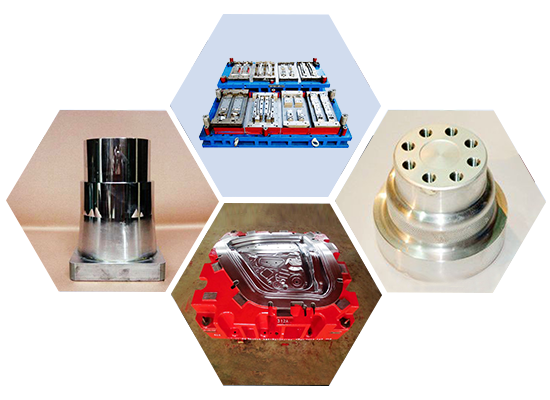NEWS
————
What ion polyacrylamide is selected for electroplating wastewater treatment?
Author:管理员 Dtime:2024-02-22 10:44:08 Browse (286)
The sources of electroplating wastewater include plating cleaning water, waste electroplating solution, equipment cooling water, and other wastewater.
The sources of electroplating wastewater include plating cleaning water, waste electroplating solution, equipment cooling water, and other wastewater.
The characteristics of sewage are that this type of wastewater is generally of strong acidic water quality, with complex water quality and difficult to control components. It contains heavy metal ions such as chromium, cadmium, nickel, copper, zinc, gold, silver, and cyanide, some of which are highly toxic substances that can cause cancer, malformation, and mutation.
After entering the water, these heavy metals have a magnifying effect on the food chain and can accumulate in certain organs of the human body, causing chronic poisoning and endangering human health.
When treating electroplating wastewater, due to the presence of many expensive heavy metals in the wastewater, if the heavy metals in the wastewater are recycled as a resource, it not only solves the pollution of heavy metals, but also has certain economic benefits.
The commonly used methods for treating heavy metal wastewater currently include chemical precipitation, reduction, adsorption, membrane separation, coagulation, ion exchange, and electrochemical methods. The selection results of polyacrylamide for treating this type of wastewater are directly related to its pH value, as most of this type of wastewater is treated under strong acid conditions.
The optimal method and precautions for using polyacrylamide in electroplating wastewater
1. Polyacrylamide is determined through small-scale testing to determine the optimal model and dosage of the product.
2. The product should be prepared as an aqueous solution with a concentration of 0.1% (referring to solid content), preferably in neutral water without salt.
3. When dissolving water, evenly sprinkle this product into the stirred water and increase the temperature appropriately (<60 ℃) to accelerate the solution.
4. Solid products are packaged in polypropylene woven bags, lined with plastic bags, each weighing 25kg
5. Solid products should be avoided from being scattered on the ground to prevent them from becoming slippery due to moisture absorption.
6. When preparing PAM aqueous solution, it should be done in enamel, galvanized, aluminum or plastic drums, and not in iron containers for preparation and storage
7. When dissolving, attention should be paid to evenly and slowly adding the product into a dissolver with stirring and heating measures. Solidification should be avoided, and the solution should be prepared at a suitable temperature. Long term and excessive mechanical shear should be avoided. It is recommended to use a stirrer of 60 ° C; 200 rpm, otherwise it will cause polymer degradation and affect the effectiveness of use
When most of the electroplating wastewater is under strong acid conditions, we usually choose cationic and alkaline conditions for coagulation, and generally use ultra-high molecular weight anionic polyacrylamide as a coagulant aid.
It should be noted that due to the characteristics of electroplating wastewater itself, its pH value is relatively high. Before selecting reagents, it is better to first select water samples for beaker experiments to determine the selection and dosage.
Each thousand tons of electroplating wastewater that needs to be treated generally requires 20-100 kilograms of product. The amount of polyacrylamide used to treat electroplating wastewater is about 2-10 grams. The specific amount of polyacrylamide agent used in electroplating wastewater should be determined based on the specific on-site conditions such as wastewater turbidity, molecular weight of polyacrylamide agent, and impurities in the water.
The characteristics of sewage are that this type of wastewater is generally of strong acidic water quality, with complex water quality and difficult to control components. It contains heavy metal ions such as chromium, cadmium, nickel, copper, zinc, gold, silver, and cyanide, some of which are highly toxic substances that can cause cancer, malformation, and mutation.
After entering the water, these heavy metals have a magnifying effect on the food chain and can accumulate in certain organs of the human body, causing chronic poisoning and endangering human health.
When treating electroplating wastewater, due to the presence of many expensive heavy metals in the wastewater, if the heavy metals in the wastewater are recycled as a resource, it not only solves the pollution of heavy metals, but also has certain economic benefits.
The commonly used methods for treating heavy metal wastewater currently include chemical precipitation, reduction, adsorption, membrane separation, coagulation, ion exchange, and electrochemical methods. The selection results of polyacrylamide for treating this type of wastewater are directly related to its pH value, as most of this type of wastewater is treated under strong acid conditions.
The optimal method and precautions for using polyacrylamide in electroplating wastewater
1. Polyacrylamide is determined through small-scale testing to determine the optimal model and dosage of the product.
2. The product should be prepared as an aqueous solution with a concentration of 0.1% (referring to solid content), preferably in neutral water without salt.
3. When dissolving water, evenly sprinkle this product into the stirred water and increase the temperature appropriately (<60 ℃) to accelerate the solution.
4. Solid products are packaged in polypropylene woven bags, lined with plastic bags, each weighing 25kg
5. Solid products should be avoided from being scattered on the ground to prevent them from becoming slippery due to moisture absorption.
6. When preparing PAM aqueous solution, it should be done in enamel, galvanized, aluminum or plastic drums, and not in iron containers for preparation and storage
7. When dissolving, attention should be paid to evenly and slowly adding the product into a dissolver with stirring and heating measures. Solidification should be avoided, and the solution should be prepared at a suitable temperature. Long term and excessive mechanical shear should be avoided. It is recommended to use a stirrer of 60 ° C; 200 rpm, otherwise it will cause polymer degradation and affect the effectiveness of use
When most of the electroplating wastewater is under strong acid conditions, we usually choose cationic and alkaline conditions for coagulation, and generally use ultra-high molecular weight anionic polyacrylamide as a coagulant aid.
It should be noted that due to the characteristics of electroplating wastewater itself, its pH value is relatively high. Before selecting reagents, it is better to first select water samples for beaker experiments to determine the selection and dosage.
Each thousand tons of electroplating wastewater that needs to be treated generally requires 20-100 kilograms of product. The amount of polyacrylamide used to treat electroplating wastewater is about 2-10 grams. The specific amount of polyacrylamide agent used in electroplating wastewater should be determined based on the specific on-site conditions such as wastewater turbidity, molecular weight of polyacrylamide agent, and impurities in the water.





